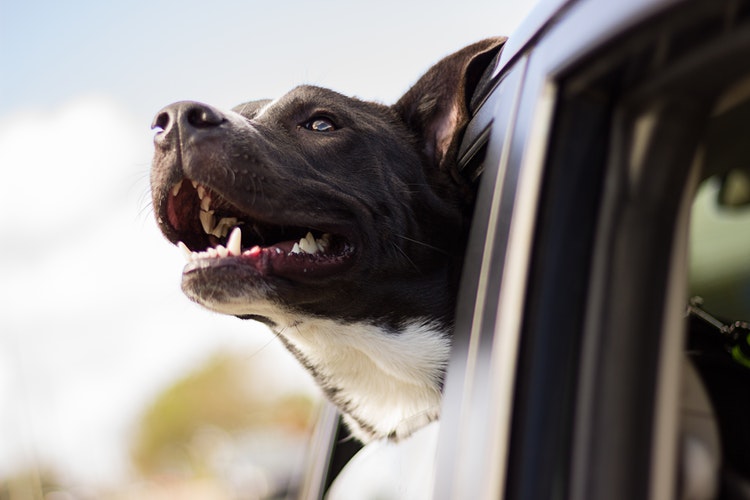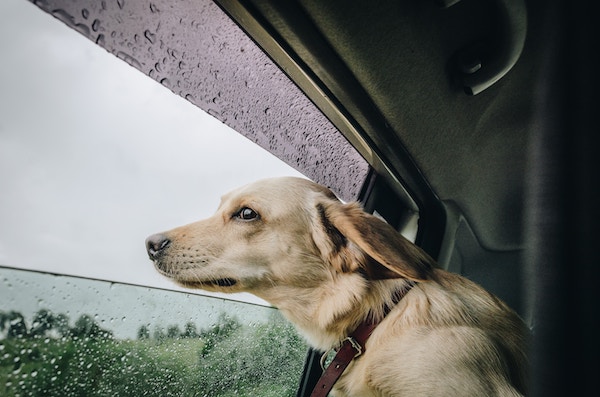You’ve set off on a road trip. The windows are down, the music’s pumping and your pup is there with you. Things are going well…until you realise that your four-legged pal is under the weather and proceeds to regurgitate their brekky on your backseat. Many dog owners will have faced this scenario before and understand that motion-sickness can be a real issue for some pets.
So, to save you the indignity of that clean-up, we’ve compiled all the information you need to know about the causes, symptoms and treatments for pet motion-sickness.*
Causes of Pet Motion-Sickness:
Similar to human children, puppies and young dogs are far more likely to experience motion-sickness than older pets. This is because of their relative lack of development when it comes to ear structures. The vestibular systems that maintain balance and equilibrium aren’t fully formed, leading to pronounced nausea when in a moving vehicle.
However, the power of associative behaviour is very strong when it comes to motion-sickness. A pet may react in this way because they have had negative early life experiences with travel and vehicles. They may begin to associate the car with sickness, which is why it is highly important to intervene and treat motion sickness as early as possible. The anxiety of being in this different environment can often worsen existing nausea symptoms, creating a challenging cycle of physical and emotional responses.
Symptoms of Pet Motion-Sickness
While we usually associate human car-sickness with green-tinged faces and vomiting, it affects animals in a variety of ways which aren’t always quite so obvious.
Keep a look out for the following symptoms:
- sluggishness and lethargy
- inactivity
- fear of cars
- anxiety
- yawning
- excessive drooling
- excessive smacking/licking lips
- whining
- vomiting
Treatment of Pet Motion-Sickness:
- Make sure your pet is facing the front, rather than the side in order to curb the disorienting effects of car travel. Use a specially designed dog-seat belt to secure them in this position, or a crate. While the crate may not have them facing forwards, it will keep them safe, more stationary and offer an easier alternative for cleaning, if an accident occurs. It’s very important to never seat your dog in the front passenger seat, because the risk of air-bags inflation poses a potential danger.
- Plan for a longer trip duration, so you can account for short breaks that allow your pet to get fresh air and feel stabilised. Ensuring that they are well-exercised beforehand will likely reduce some of their potential anxiety and make for a calmer experience.
- Ensure that the windows are opened slightly, keeping the car cool and ventilated whilst balancing the air pressure inside and outside the vehicle. This helps your pet adjust to the difference between the two less sharply, which reduces disorientation.
- Consider using a calming collars and pressure wrap to prevent the nausea/anxiety cycle and association from taking hold.
- Avoid big meals before driving – when a pet is driving on a full stomach, the likelihood of illness will understandably increase. Taking extra water on longer trips is a must.
- Sugary treats such as jellybeans should reduce motion-sickness and curb the nausea. But it’s crucial to never use chocolate as this will elicit a highly negative reaction in your animals.
- Ginger treats, specially made for dogs, are a great option because ginger naturally eases nausea. Be aware that while dogs over 7.5 kilos can handle up to 500mg of ginger, smaller dogs should have no more than 250g.
- If your pet continues to suffer motion-sickness, consult your vet for appropriate medications and dosages which can alleviate symptoms safely.
A Note on Treating Car-Related Associations:
Is your dog is older but still experiencing motion-sickness? If so, it’s highly likely they have some negative associations with the car from early life experience. Many pets will also associate vehicles with going to the vet or similar. To interrupt this cycle, try some of the following suggestions:
- Spend some time in the car with the engine off
- Work with them to approach the car, without getting in
- Use different vehicles if possible, so they don’t associate with a specific car
- Take shorter trips where possible to grow their tolerance
- By offering a treat when they successfully travel in the car, you will gradually change their association
- Make sure to give them a break between long car trips, of at least a few weeks if possible
- Offer them special toys that are only available to them in the car
- To combat any negative vet-related associations, take plenty of short trips to more relaxed environments like the park.
*This is intended as general information and is no way a substitute for targeted and personalised veterinary advice.



[…] Want to know how to alleviate pet-motion sickness? Read our blog post here. […]